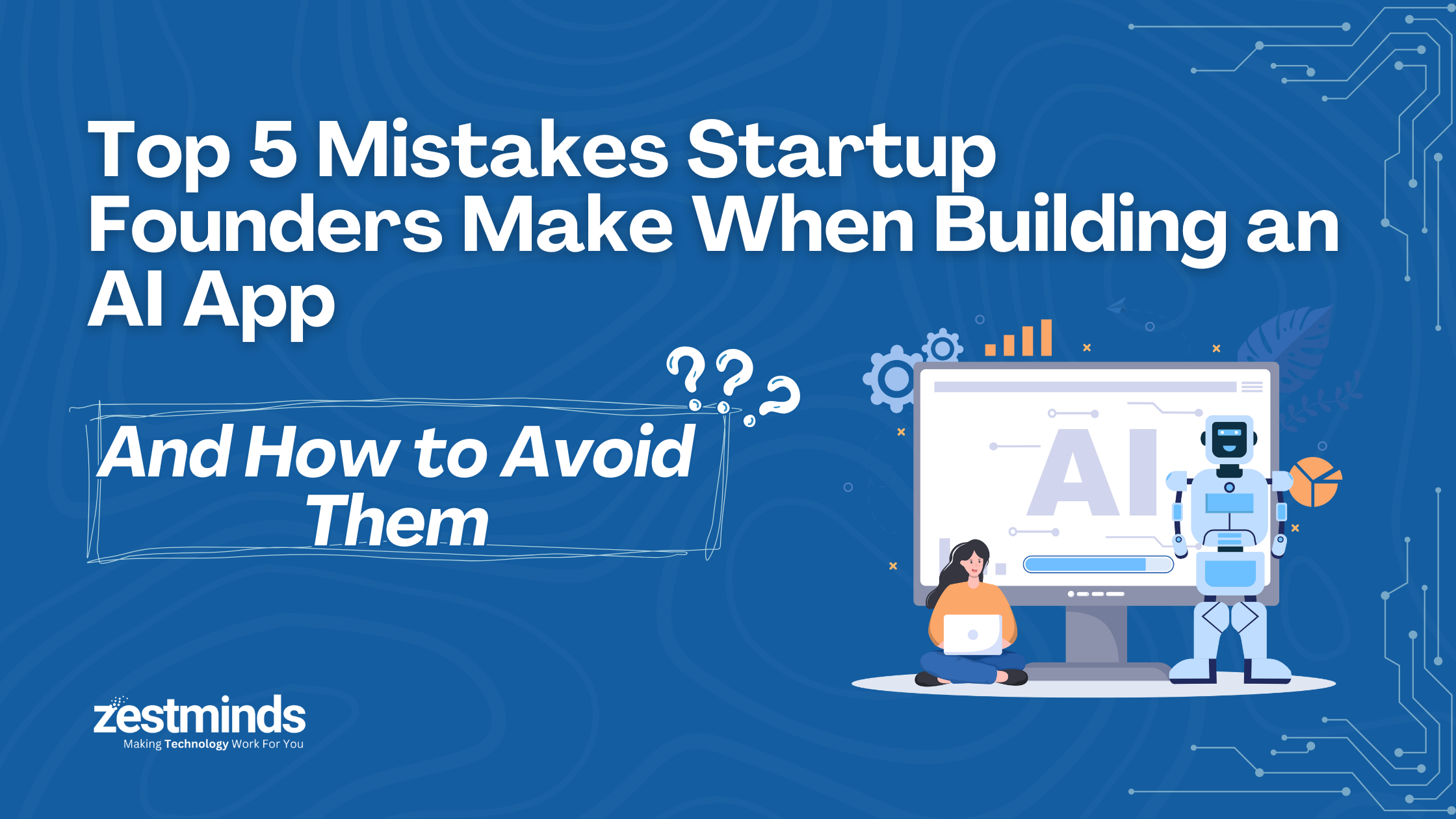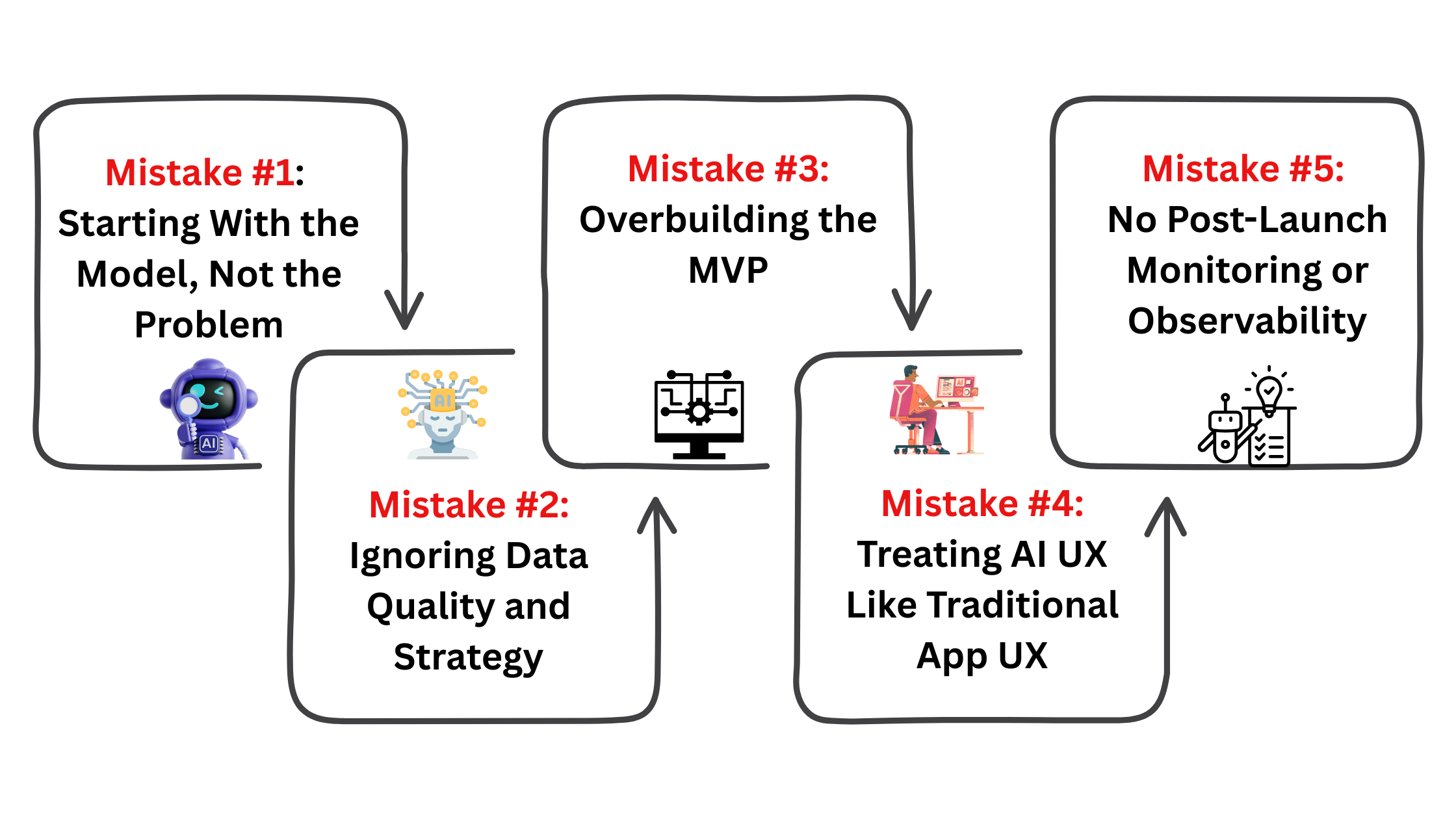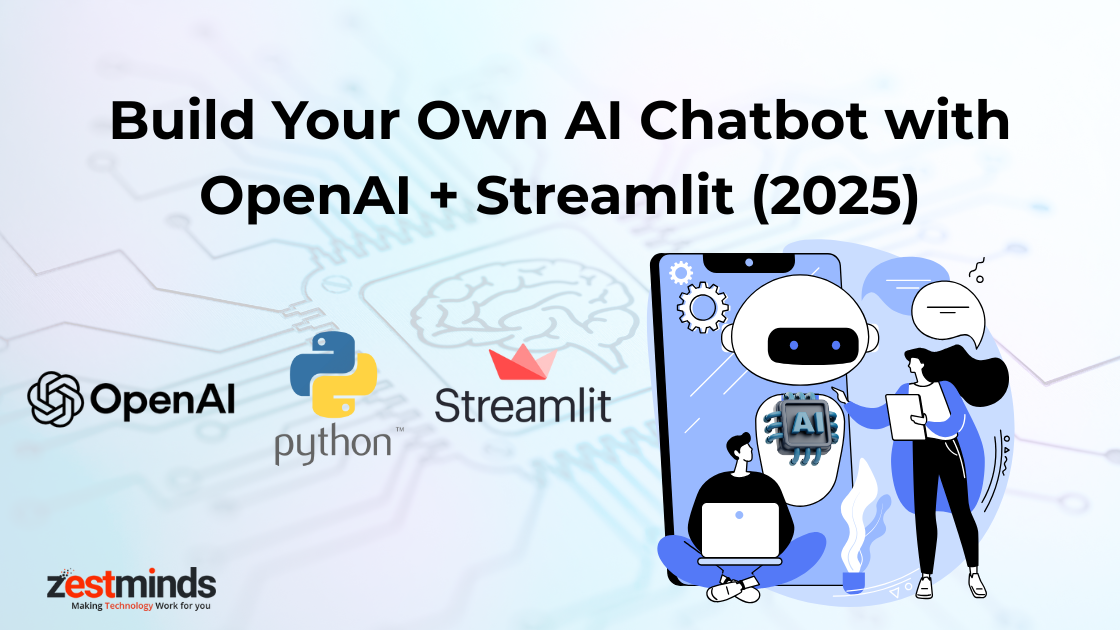Top 5 Mistakes Startup Founders Make When Building an AI App (And How to Avoid Them)
Every founder wants AI in their product — but few get it right the first time. Learn from 50+ real projects what works, what doesn’t, and how to build smarter from day one.

"Everyone wants AI in their product, but not everyone knows how to build it right." — A wise CTO once said over coffee.
If you're a startup founder thinking about building an AI app, you're in good company — and in good danger, too. We’ve worked with dozens of visionary founders who were either starting from scratch or fixing what had gone wrong in version one. And 9 out of 10 times, the problem wasn’t their idea. It was the approach.
In this guide, we’ll show you the five biggest (and avoidable) mistakes startup founders make when building AI products, along with practical strategies to steer clear of them.
Whether you're a tech-savvy founder or someone new to AI, this guide will help you build smarter, faster, and more effectively — without falling into the usual traps.

Mistake #1: Starting With the Model, Not the Problem
"Let’s just use GPT-4 and fine-tune it."
Sound familiar? Many founders begin their AI journey with the technology — especially the shiny stuff like GPT-4, DALL·E, or LangChain.
But here’s the thing: AI is not the product. It’s the engine inside the product.
Why it’s a mistake: Jumping straight into LLMs without clearly defining the business problem leads to bloated, unfocused solutions. You might build a chatbot when what users need is an intelligent document search.
What to do instead:
- Start with a problem statement: What user need are you solving?
- Validate with real users before choosing a model.
- Keep AI as a means to the end — not the goal itself.
Learn more about our AI development approach.
Mistake #2: Ignoring Data Quality and Strategy
Data is the lifeblood of any AI product. Yet we still hear this:
"We’ll scrape some data, run it through a model, and go live."
Why it’s a mistake: Poor, unlabeled, or biased data leads to inaccurate results, user frustration, and worse — legal and ethical challenges.
What to do instead:
- Invest in clean, labeled, domain-specific data.
- Set up feedback loops early (users labeling, rating, or correcting AI output).
- Use vector databases like Weaviate or Pinecone.
Tip: Even a small, well-prepared dataset can outperform a massive, messy one.
Mistake #3: Overbuilding the MVP
“We’ll build the chatbot, onboarding system, CRM, and a reporting dashboard — all in v1.”
Why it’s a mistake: Overbuilding leads to long dev cycles, missed market timing, and confused users. Founders often feel pressure to ship "everything" but forget the golden rule of MVPs: Minimum Viable Product.
What to do instead:
- Identify the core AI interaction (e.g., a chatbot that answers one domain-specific task).
- Ship a thin slice of value — then iterate based on feedback.
- Use tools like Streamlit or FastAPI for rapid prototypes.
Check our Generative AI Development Services.
Mistake #4: Treating AI UX Like Traditional App UX
"Let’s add a chatbot button in the bottom right."
Why it’s a mistake: AI-powered apps need different UX patterns:
- How do users know what to type?
- What happens when the model says, "I don't know"?
- What if the model makes something up?
What to do instead:
- Provide examples or suggested prompts.
- Use loading indicators and explain delays.
- Include a fallback plan when AI fails.
Great AI products guide users through ambiguity.
Mistake #5: No Post-Launch Monitoring or Observability
“It's live. We’re done, right?”
Why it’s a mistake: AI is dynamic. Models drift. Prompts break. Data changes.
What to do instead:
- Implement prompt observability.
- Log user inputs, model confidence, and errors.
- Set up a feedback mechanism — even a thumbs-up/down system helps.
See how our Python development services handle AI observability.

How Zestminds Helps Founders Build AI Apps — Without the Chaos
We’ve built custom AI solutions for early-stage startups, growing SaaS platforms, and enterprise innovation labs.
- AI use case validation and consulting
- MVP planning and data readiness
- LLM/RAG/NLP architecture setup
- Scalable backends using Python + FastAPI
- User-first AI interface design (with Streamlit, React, etc.)
TL;DR — 5 Mistakes to Avoid
- Starting with GPT instead of a user problem
- Ignoring data quality and feedback loops
- Building a bloated MVP no one uses
- Designing chatbot UIs without thinking through UX
- Launching without monitoring what your AI does
Talk to users. Test small. Watch the model. Design smart.
Frequently Asked Questions
What are the biggest mistakes founders make when building AI apps?
The most common include:
- Starting with GPT before validating the user problem
- Underestimating data quality needs
- Over-engineering the MVP
- Ignoring AI-specific UX challenges
- Skipping post-launch observability and feedback loops
This blog covers all five in depth with examples and solutions.
Do I need a large dataset to build an AI MVP?
Not necessarily. A small but clean, labeled, and domain-specific dataset can outperform a large messy one. It’s more important to focus on data quality, not just volume. Tools like Pinecone and Weaviate also allow AI apps to work well with lean data via retrieval methods.
How do I know if my app idea really needs AI?
If the core task involves pattern recognition, prediction, personalization, or natural language understanding, it may be a good AI use case.
Still unsure? Book a free consult with Zestminds — we’ll help you evaluate it honestly.
What’s the ideal tech stack for building an AI MVP?
A typical lean, modern AI MVP might include:
- Frontend: Streamlit or React
- Backend: Python + FastAPI
- Model: OpenAI / Cohere / HuggingFace
- Database: PostgreSQL + Pinecone / Weaviate
- Observability: Custom logging + user feedback loop
We help startups pick the right-sized stack based on use case and scale.
How long does it take to build an AI MVP?
3 to 6 weeks is a common range for a focused, functional MVP — assuming:
- Clear use case
- Small but good dataset
- Lean dev sprints with one team
For larger builds, modular delivery is key.
What’s different about designing UX for AI apps?
AI UIs need to:
- Guide users with prompts/examples
- Handle uncertainty gracefully
- Show loading/thinking states
- Offer fallback or error explanation when AI fails
Designing trust into AI apps is part of what we specialize in at Zestminds.
Can Zestminds help with both strategy and development?
Absolutely. We’re a full-service partner for:
- AI consulting & use case discovery
- LLM-based app architecture
- Frontend + backend dev (Streamlit, FastAPI, React)
- Vector search integration
- AI observability & post-launch support
Ready to Build Smarter?
Avoiding these mistakes will save you time, money, and headaches. More importantly, it’ll help you build a product that actually solves problems.
Related Services
To explore how AI can revolutionize your business
Check out our AI solutions!
Shivam Sharma
About the Author
With over 13 years of experience in software development, I am the Founder, Director, and CTO of Zestminds, an IT agency specializing in custom software solutions, AI innovation, and digital transformation. I lead a team of skilled engineers, helping businesses streamline processes, optimize performance, and achieve growth through scalable web and mobile applications, AI integration, and automation.



